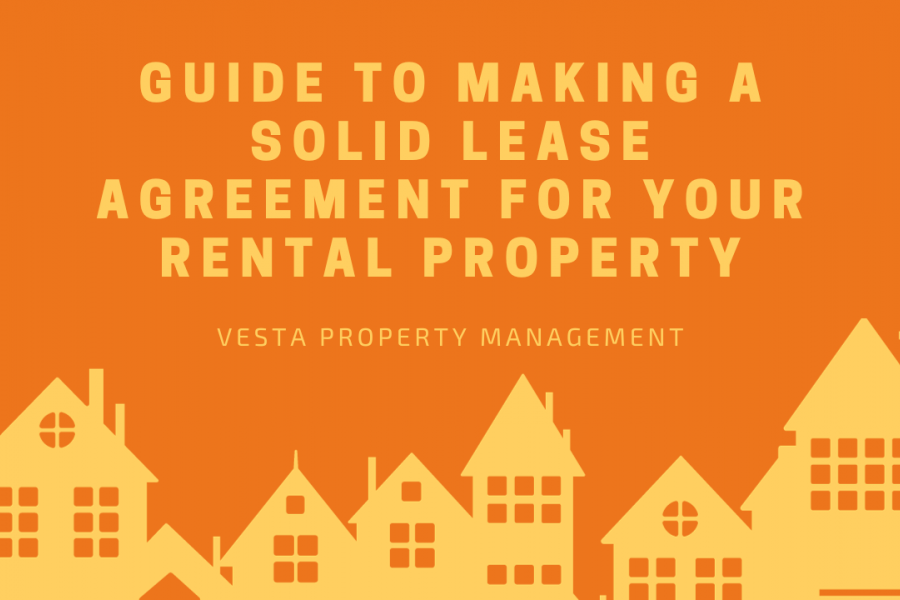
Good communication serves as the foundation for a positive landlord-tenant relationship. To establish this right from the start, it is essential to have a leasing agreement in place.
This contractual document outlines the terms and conditions of the rental arrangement between the landlord and tenant, and serves as a guide to ensure mutual understanding and compliance with expectations.
By clearly articulating the rights, responsibilities, and obligations of both parties, a leasing agreement facilitates effective communication and minimizes the likelihood of misunderstandings or disputes. It is a crucial tool for fostering transparency and trust.
In this article, we will delve into the purpose of a lease agreement and the key elements that should be included.
Ways to Draft a Lease Agreement
Before delving into the details of developing a solid lease agreement, it's important to understand that there are several ways to prepare one.
It is recommended that you look into a property management company like Vesta Property Management. They have a team of experts that are knowledgeable about local and state laws, which can be complex and subject to change. Utilizing their services ensures compliance and peace of mind for all parties involved, making the leasing process more efficient and secure.
Purpose of a Leasing Agreement
A leasing agreement serves several important functions:
Legal Protection
It creates an enforceable foundation for the landlord-tenant relationship, assisting in the protection of your interests and rights.

Transparency
A well-drafted lease clarifies the conditions, roles, and obligations of both parties, minimizing the risk of disagreements.
Rent Payment
It specifies the defined rent amount, due date, and late fees, ensuring prompt lease payments.
Property Maintenance
The lease defines tenant obligations for property upkeep, which can assist in keeping your rental property in excellent shape.
Conflict Resolution:
The lease agreement can be utilized as a point of reference to swiftly and impartially address concerns.
Fundamentals Every Lease Should Cover
You must incorporate the following key details in order to construct a solid leasing agreement:
Specific Information
This includes the names of the parties involved, as well as the name and address of the rental property.
Lease Period
Be precise about whether the lease is for a set period (e.g., one year) or on a month-to-month basis.
Amount of Rent
Indicate the cost of monthly rent, as well as any prorated amounts for the first and last months, if applicable.
Rent Due Date
Establish the rent payment due date, as well as any allowable extensions and late payment charges, if any.
Signatures of All Parties
Check that each participant, including co-signers have dated and signed the rental contract.
Important Clauses and Policies to Include in Your Lease
Aside from the fundamentals, the agreement must contain certain rules and regulations to protect your investment while establishing high standards.

Consider the following important clauses:
Tenant Obligations
Define tenant duties clearly, including repairs, upkeep, and property use guidelines.
Subletting
If subletting is permitted, highlight the procedure and requirements for tenants who wish to sublease your space.
Breaking a Lease
It's crucial to follow Virginia law's recognized justifications and make it clear if you'll accept any extra ones.
Security Deposit
Indicate the amount of the security deposit. In order for tenants to know when and how their security deposit will be repaid, it is important to clearly define the procedure and requirements.
The Importance of Lease Disclosures
In several states, including significant disclosures in your rental contract is not only a legal necessity, but is also vital in promoting transparency and tenant safety. Failure to make these disclosures may result in legal problems and financial consequences. Consider including the following critical disclosures:
Lead-based Paint
Federal Law requires owners of buildings built before 1978 to report the existence of paint containing lead and provide details regarding possible health risks.
Radon Gas
If your property is in a radon gas-prone location, inform tenants of the possible hazards and make any appropriate disclaimers.

Bed Bugs
Certain states mandate landlords to notify tenants about previous incidents with bed bugs or give out recommendations on how to prevent infestations.
Flood Hazard Area
If your property is in an area that experiences flooding, inform renters of this fact and supply flood risk materials to help educate them.
Bottom Line
Having a robust leasing contract for your rental property is an important step in protecting your investment and establishing a healthy landlord-tenant relationship. Adding necessary components, clauses, and disclosures may help guarantee that your lease is legally compliant and advantageous to both parties.
Remember that lease rules and regulations differ by state, so ensure that you are getting information from the appropriate sources or hire a reliable property management company like Vesta Property Management to remain compliant with applicable laws.
Let us take care of your leasing and other property management needs. Contact Vesta Property Management today!